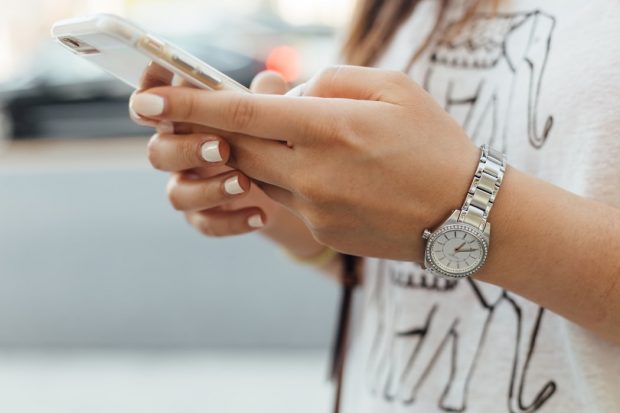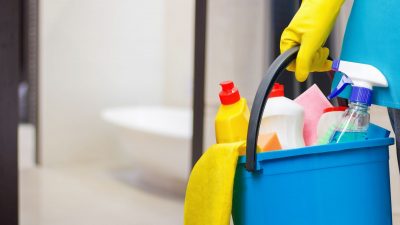Technology has a firm grip on our lives. According to a German study by the initiative D21, people look at their smartphones 60 to 80 times a day. In the process, we touch our screens constantly – in the train, while eating, and even in the bathroom! So it’s no wonder that our phones (and other tech items) are riddled with bacteria. Do not fear though, as here at Helpling we’ve found out how to get your favourite electronics clean again!
1. Headphones
Why are they dirty?
Around the headphones, sweat and moisture accumulate, and the headphones then press this onto your skin, allowing bacteria to multiply quickly. This can cause you to develop acne or skin infections.
Do:
Wet a cloth in a bucket with a mixture of warm (not hot) water and a few drops of hand soap or all-purpose cleaner to wipe your headphones. You can also use make-up remover wipes for this!
Brush away stubborn dirt with an old toothbrush.
Don’t:
Share your headphones with others. According to a study, harmful bacteria can easily be transferred from one person to another through headphones. Sharing is not caring in this case!
2. Smartphones & tablets
Why are they dirty?
Various studies have shown that smartphones and tablets can contain more bacteria than a toilet seat. Especially since you use them so often and take them everywhere!
Do:
Use a microfibre cloth to clean the screen regularly.
For thorough cleaning, switch off your phone and disconnect all components. Disinfect and remove unnecessary dirt with a cloth and cotton swab dipped in a mixture of water and vinegar – you only need a little bit!
Don’t:
Spray detergent directly on the screen as it may cause droplets to get into the speakers or microphone and damage the device.
3. Laptops
Why are they dirty?
The keyboard of your laptop contains 5 times more bacteria than a toilet seat. Research shows that there are more than 1200 organisms per cm2 on your keyboard and more than 640 per cm2 on your mouse. This can lead to infections and flu as the bacteria is transferred when you touch your mouth or eyes with your hands.
Do:
To clean your mouse, you can use the same method as for your smartphone.
For the keyboard: Make sure your laptop and keyboard are turned off and not connected to an outlet. Clean the keyboard by dusting it with a soft brush. A slightly damp cloth and a little methylated spirit will get rid of any stains on the keyboard.
Don’t:
Hold your keyboard upside down and shake it really hard. You can do this carefully with a keyboard attached to a wire, but not with your laptop!
4. Cameras
Why are they dirty?
It is very annoying when you come home from holiday and find that all your photos are ruined by a dirty lens. And that’s not the only reason to clean your camera often: by touching buttons and passing them on to other people, it’s also an easy transfer point for germs.
Do:
To clean the camera body on the outside, use a lint-free and dust-free, slightly damp cloth. Avoid cleaning products as this can damage the camera!
For the inside: Open the battery and memory cardholder and use a soft brush (clean make-up brushes are perfect for this) to remove dust and sand grains.
The lens is best cleaned with a cloth specially made for optics, available from opticians or photography shops.
If you can remove the lens from the body, it is best to clean it with a hand pump, which is available at photography shops. Use the pump to remove dust from the inside of the camera and lens.
Don’t:
Clean stubborn dirt, especially on the sensor, yourself. For this, we recommend taking your camera to an expert to avoid damaging sensitive parts of your camera.
5. Sport watches & smartwatches
Why are they dirty?
The screens of smartwatches are touched a lot, which makes them greasy and dirty. In addition, sweat and dead skin cells stick under the strap. High time to clean them if you have never done so before!
Do:
Lightly dampen a cloth in a bowl of lukewarm water and a small drop of soap or all-purpose cleaner. Use this to clean the screen.
If the watch strap is plastic you can be a little tougher. Put plastic straps in the bowl of soapy water and clean thoroughly with a cloth or sponge.
Don’t:
Clean leather straps with plenty of water. Instead, wipe them with a damp cloth without soap or detergent.













